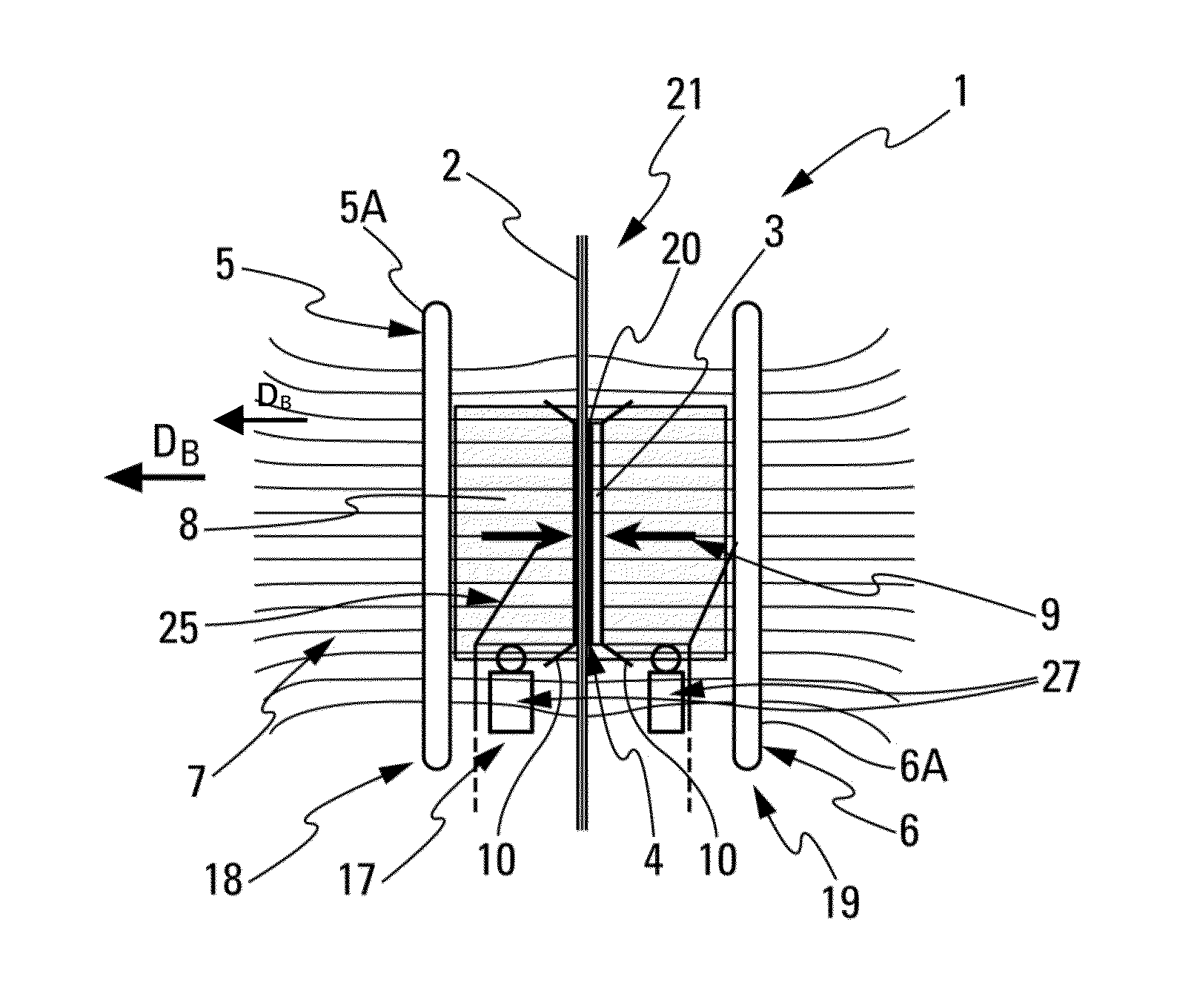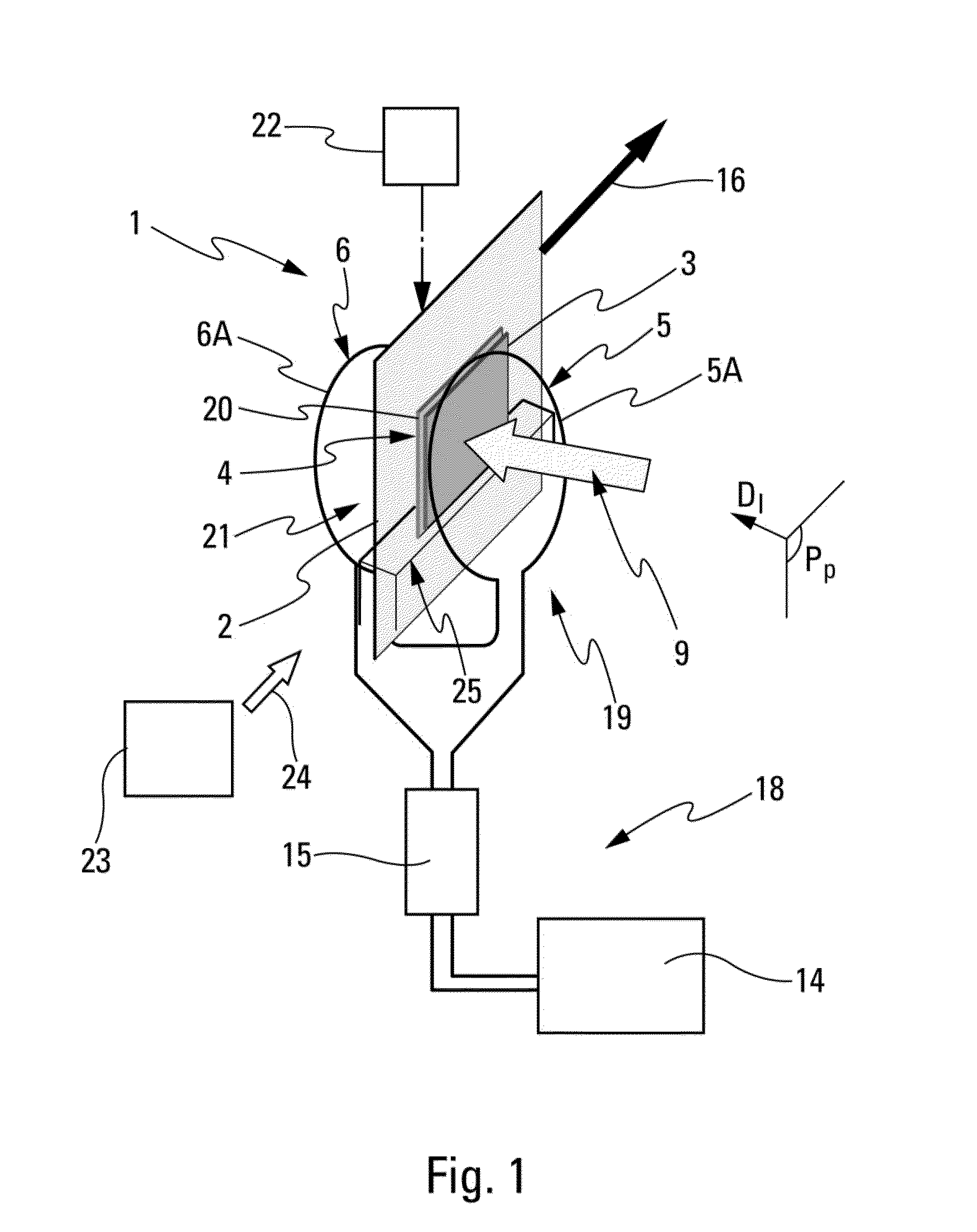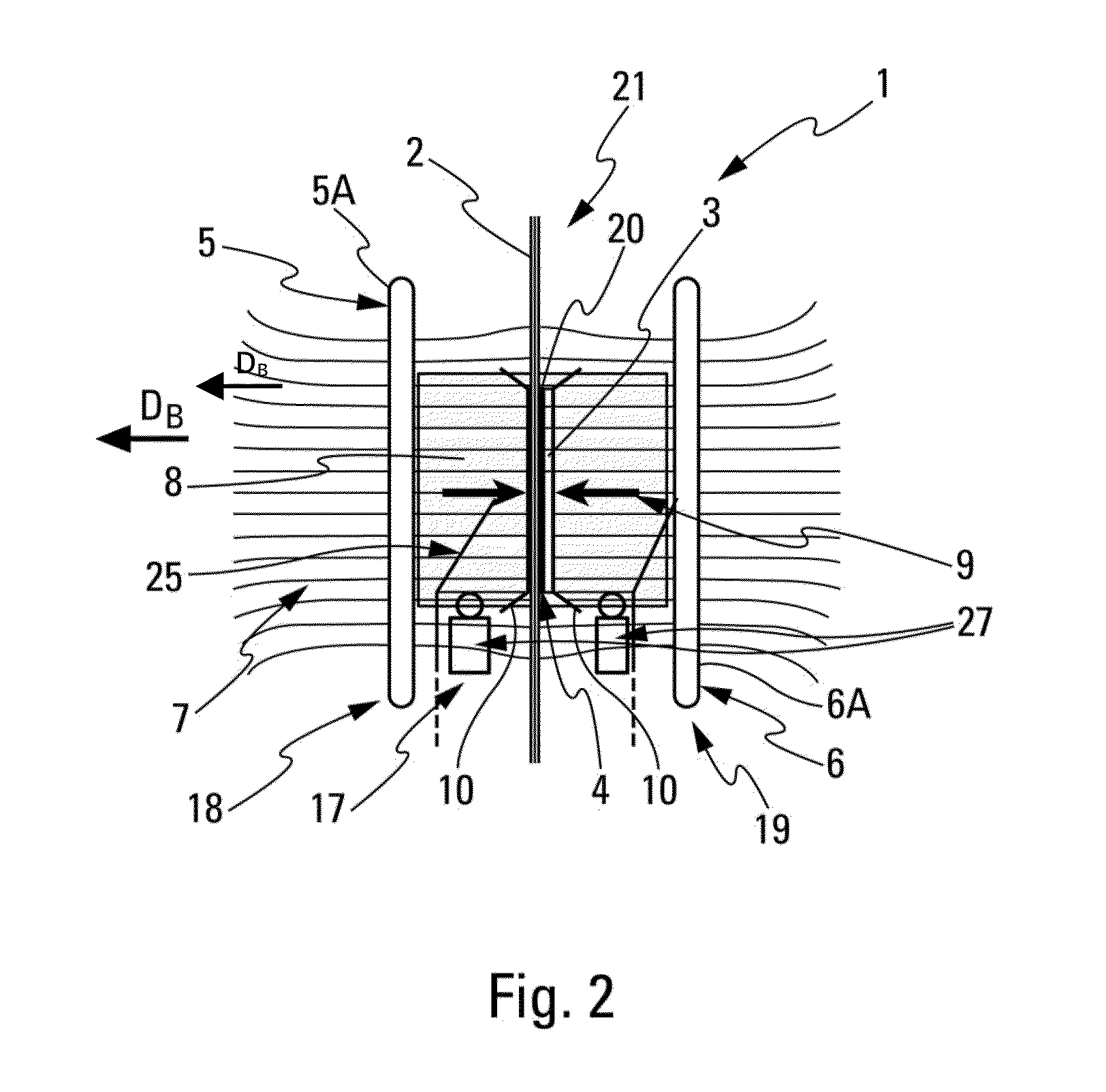Induction welding process and device for parts made of composite materials
a composite material and welding process technology, applied in the direction of ohmic-resistance heating, other domestic articles, electric/magnetic/electromagnetic heating, etc., can solve the problems of difficult control in terms of temperature and welding interface, difficult to manage magnetic field in order to limit the effect of effect, and difficulty in controlling process temperatur
- Summary
- Abstract
- Description
- Claims
- Application Information
AI Technical Summary
Benefits of technology
Problems solved by technology
Method used
Image
Examples
first embodiment
[0050]In a first embodiment, the grate or the ferromagnetic particles are embedded in a resin film compatible with those of the two parts 2 and 3 and form an interface element 20 disposed between the contact walls of the two parts 2 and 3, so that welding is carried out during the transformation of the composite materials.
[0051]According to another embodiment, the ferromagnetic particles are mixed with the composite material resin on the contact wall of at least one of the parts 2 and 3 at the time of production of the parts 2 and 3. The ferromagnetic material is present in the form of spherical ferromagnetic particles embedded in the resin, for example polysulfone (PSU), with volume fractions of between 10% and 20%. The diameter of the ferromagnetic particles is small (between 22 microns and 300 microns). The uniformity of the resin / particles mixture depends on the grade of the resin, the granulometry of the ferromagnetic material particles and also the impregnation between the res...
second embodiment
[0068]Moreover, in the invention, the device 1 further comprises means of displacement 22 which are capable of moving the assembly 21 between the coils, as indicated by an arrow 16 in FIG. 3. The assembly 21 is subjected to translational movement in zone 8 where the magnetic field 7 is uniform. The displacement speed of the assembly 21 (generated by the means of displacement 22) is controlled such that the exposure time to the magnetic field 7 (between the coils) is sufficient to reach the transformation temperature of the composite materials and thereby achieve welding of the parts 2 and 3.
[0069]In this second embodiment, a production line allows the assembled parts 2 and 3 to be produced by making them circulate in an assembly between the two coils.
[0070]The magnetic field 7 is applied with defined parameters depending on the nature of the ferromagnetic material, the granulometry of the particles or of the grate. In a preferred embodiment, the frequencies are raised (in the order ...
PUM
| Property | Measurement | Unit |
|---|---|---|
| temperature | aaaaa | aaaaa |
| diameter | aaaaa | aaaaa |
| diameter | aaaaa | aaaaa |
Abstract
Description
Claims
Application Information
 Login to View More
Login to View More - R&D
- Intellectual Property
- Life Sciences
- Materials
- Tech Scout
- Unparalleled Data Quality
- Higher Quality Content
- 60% Fewer Hallucinations
Browse by: Latest US Patents, China's latest patents, Technical Efficacy Thesaurus, Application Domain, Technology Topic, Popular Technical Reports.
© 2025 PatSnap. All rights reserved.Legal|Privacy policy|Modern Slavery Act Transparency Statement|Sitemap|About US| Contact US: help@patsnap.com



